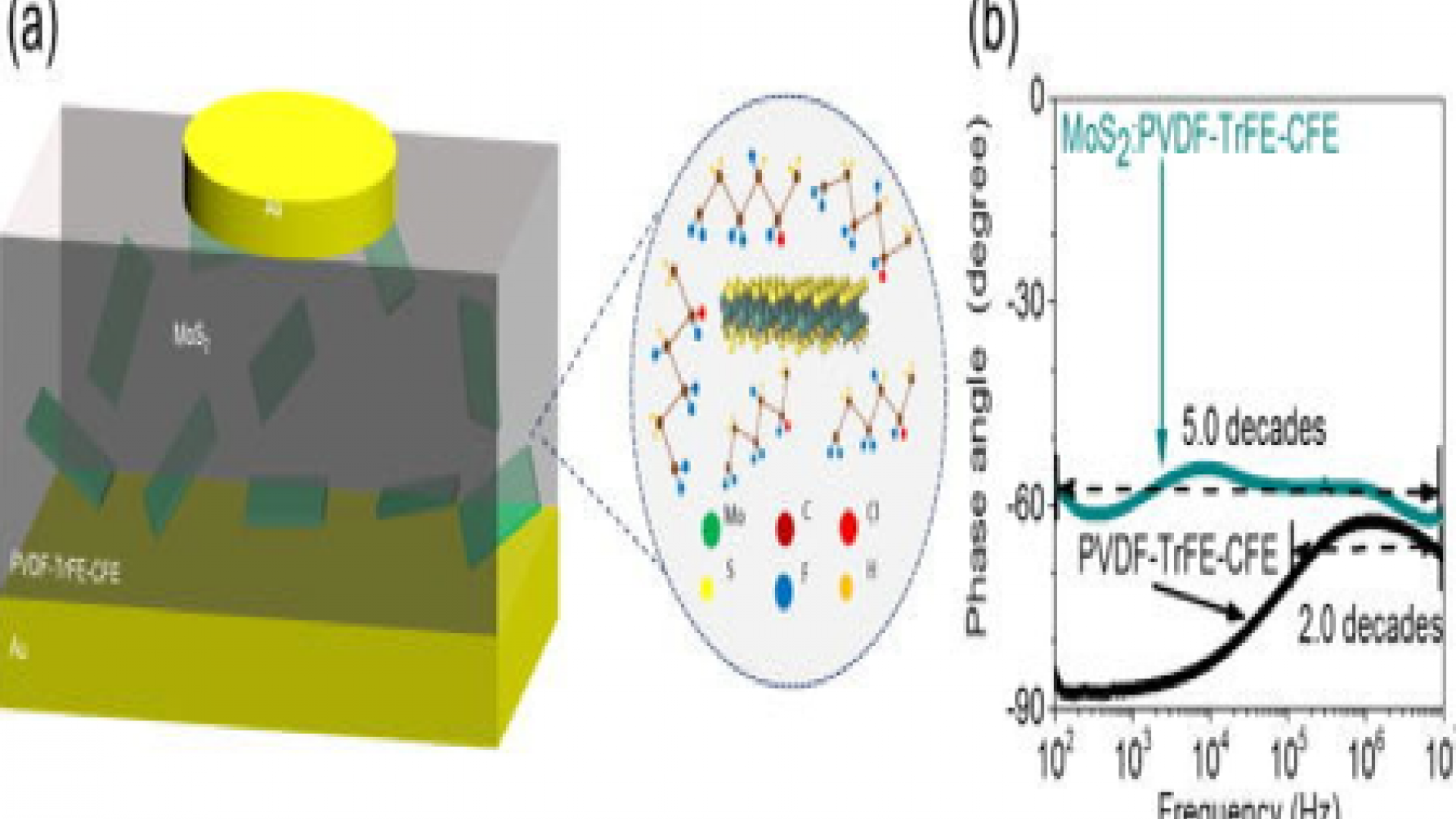Agamyrat Agambayev, et al., "An ultra-broadband single-component fractional-order capacitor using MoS2-ferroelectric polymer composite". Applied Physics Letters, 113(9),2018, 093505.
The phase angle of a fractional-order capacitor's (FOC) impedance has a constant value between −90°−90° and 0°0°. Maintaining this value over a broad frequency band is of utmost importance since it increases the applicability of the electrical circuit that employs the fractional-order capacitor (FOC). In this work, a molybdenum disulfide (MoS2)-ferroelectric polymer composite is used to design/fabricate an FOC. The resulting FOC's bandwidth of operation, which is defined as the frequency band where the variation in the phase angle is no more than ±4°±4°, is five decades between 100 Hz and 10 MHz, a 3 decades improvement over the best reported state of the art. The value of the constant phase angle can be tuned from −80°−80° to −58°−58° by changing the type of the ferroelectric polymer in the composite and the volume ratio of MoS2. The results presented in this work demonstrate the potential of the FOCs fabricated using MoS2-ferroelectric polymer composites in robust and accurate realization of various electrical systems.
Over the last decade, there has been increasing interest in designing and fabricating fractional-order capacitors (FOCs) for various applications.1–11 Thanks to the additional parameter, namely, the fractional order (see supplementary material Sec. S1 and Fig. S1), FOCs offer increased flexibility in modeling and designing various electrical devices and systems, such as filters,12,13 oscillators,14,15 neural circuits,2 transmission lines,16 supercapacitors and batteries,17–21 impedance matching networks,22 phase-locked loops,23 and proportional–integral–derivative controllers,24 and open the door to several unconventional properties that cannot be obtained using traditional circuit elements. For example, unlike a conventional capacitor, an FOC supports a capacitive memory, which enables temporal history of signals to be “stored” by electrical circuits, and therefore, it can be used to more accurately mimic/model electrical pulses communicated by neurons2 and memory regeneration phenomena observed in dielectrics.25,26 Another example is the use of an FOC in a temperature controller instead of a conventional controller: The FOC reduces drastically both the overshoot amplitude and the time required to stabilize the temperature.7
One method of realizing an FOC in an electrical circuit is to represent it in terms of a chain network of resistors and capacitors (RC). The resulting circuit's overall impedance yields a transfer function with a non-integer order.27–29 However, oftentimes, the number of resistors and capacitors in the RC network is very high (adding an extra weight/cost to the system) and/or their resistance and capacitance values are impractical. To alleviate these bottlenecks, a method, which realizes the response of the RC network, using a microscale structure consisting of polyvinylidene fluoride (PVDF) ferroelectric polymer composites embedding carbon-based nanomaterials, particularly reduced graphene oxide (rGO) sheets and multi-walled carbon nanotubes (MWCNTs), has been employed.1,3,30 The constant phase angle (CPA) of the impedance of an FOC, which is fabricated using any one of these composites, can be controlled by changing the volume ratio of the fillers and the type of polymer in the composite. It should be noted here that the term CPA comes from the assumption that the phase angle of the FOC's impedance remains unchanged in a frequency band. This frequency band is conveniently termed constant phase zone (CPZ). Even though the CPA of the FOCs fabricated using polymer composites is tunable, their CPZ has been limited to 2.5 decades, between 50 kHz and 10 MHz. It is clear that these FOCs are not suitable for many electronic systems, which work at low frequencies, such as fractional controllers7 and neural networks.2,31,32
To alleviate this problem, in this work, an FOC is fabricated using PDVF polymer composites embedding molybdenum disulfide (MoS2) nanosheets [see Fig. 1(a)]. The resulting FOC's CPZ is five decades wide changing from 100 Hz to 10 MHz [see Fig. 1(b)]. This is the largest bandwidth of operation that has been reported for an FOC so far.
